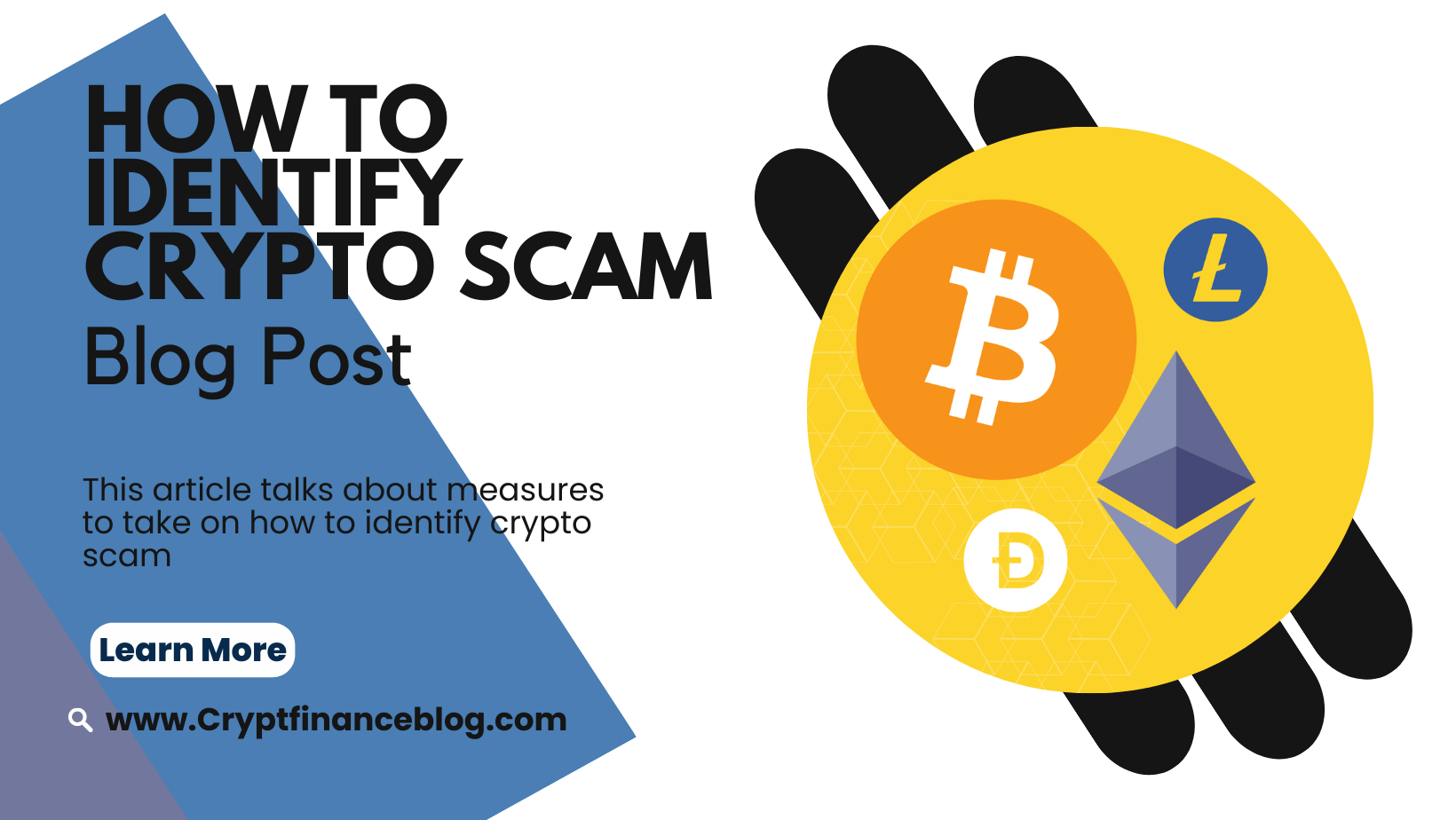How to Identify Crypto Scams

How to Identify Crypto Scams: A Guide to Identifying Fraudulent Schemes
This article will enlighten our readers on How to Identify Crypto Scams to help you avoid falling prey to some of these dubious crypto projects.

The world of cryptocurrencies has witnessed exponential growth and popularity over the past decade. However, with this surge in interest and investment opportunities, fraudulent actors have also seized the chance to exploit unsuspecting individuals. Crypto scams can take various forms thus know How to Identify Crypto Scams is a necessary skill to learn, such scams include Ponzi schemes, fake initial coin offerings (ICOs), pump-and-dump schemes, and more. To protect yourself and your investments, it is crucial to understand how to identify and steer clear of these fraudulent activities. In this article, we will provide you with valuable insights on recognizing crypto scams and safeguarding your hard-earned money.
- Do Your Research
One of the most effective ways to identify a crypto scam is by conducting thorough research. Before engaging with any cryptocurrency project or investment opportunity, take the time to investigate its background, team members, and objectives. Look for credible sources of information such as the project’s official website, whitepaper, and reputable crypto publications. Scrutinize the team’s qualifications, experience, and reputation within the industry. Genuine projects will have a transparent and comprehensive online presence, showcasing their achievements and contributions.
- Beware of Unrealistic Promises
Crypto scams often lure unsuspecting victims by making extravagant promises of high returns in a short span of time. Be wary of any investment opportunity that guarantees unrealistically large profits or claims to have a secret formula for guaranteed success. Remember, legitimate investments come with risks and uncertainties. If an offer seems too good to be true, it probably is. Exercise caution and skepticism when encountering such proposals.
- Check for Regulatory Compliance
The legitimacy of a cryptocurrency project can be assessed by checking its compliance with regulatory bodies. Reputable projects often adhere to relevant regulations and comply with Know Your Customer (KYC) and Anti-Money Laundering (AML) requirements. Research the jurisdiction in which the project operates and ensure it aligns with reputable regulatory frameworks. Lack of transparency regarding compliance or evasive answers to regulatory questions should raise red flags.
- Scrutinize the Whitepaper
The whitepaper is a critical document that outlines the technical aspects, goals, and roadmap of a cryptocurrency project. Carefully analyze the content of the whitepaper to assess its feasibility and legitimacy. Look for well-researched technical details, a clear use case, and a realistic implementation plan. Beware of whitepapers that are vague, overly complex, or lacking in substance. Additionally, plagiarism in the whitepaper is a common sign of a scam project, so verify the authenticity of the content.
- Assess the Community and Online Presence
A vibrant and engaged community is often indicative of a legitimate cryptocurrency project. Evaluate the project’s social media channels, forums, and online communities to gauge the level of activity and interaction. Authentic projects typically have an active and responsive community that openly discusses the project’s progress, challenges, and updates. In contrast, scam projects may have limited online presence, fake followers, or bot-driven engagement. Pay attention to community sentiment and any warning signs raised by experienced members.
- Watch Out for Pump-and-Dump Schemes
Pump-and-dump schemes are common in the crypto space, where scammers artificially inflate the price of a low-cap cryptocurrency by spreading false hype and encouraging others to buy. Once the price peaks, scammers sell their holdings, causing the price to crash, leaving unsuspecting investors with significant losses. Be cautious of sudden price surges without any underlying fundamental developments. Research the project’s trading volumes and market history to identify suspicious price movements.
As cryptocurrencies continue to gain popularity, the risk of falling victim to scams increases. However, by equipping yourself with knowledge and awareness, you can effectively identify and avoid fraudulent schemes. Remember to conduct thorough research, be skeptical of unrealistic promises, check for regulatory compliance, scrutinize whitepapers, assess online communities, and stay vigilant against pump-and-dump schemes. By following these guidelines, you can safeguard your investments and actively contribute to the growth of the legitimate cryptocurrency ecosystem.






